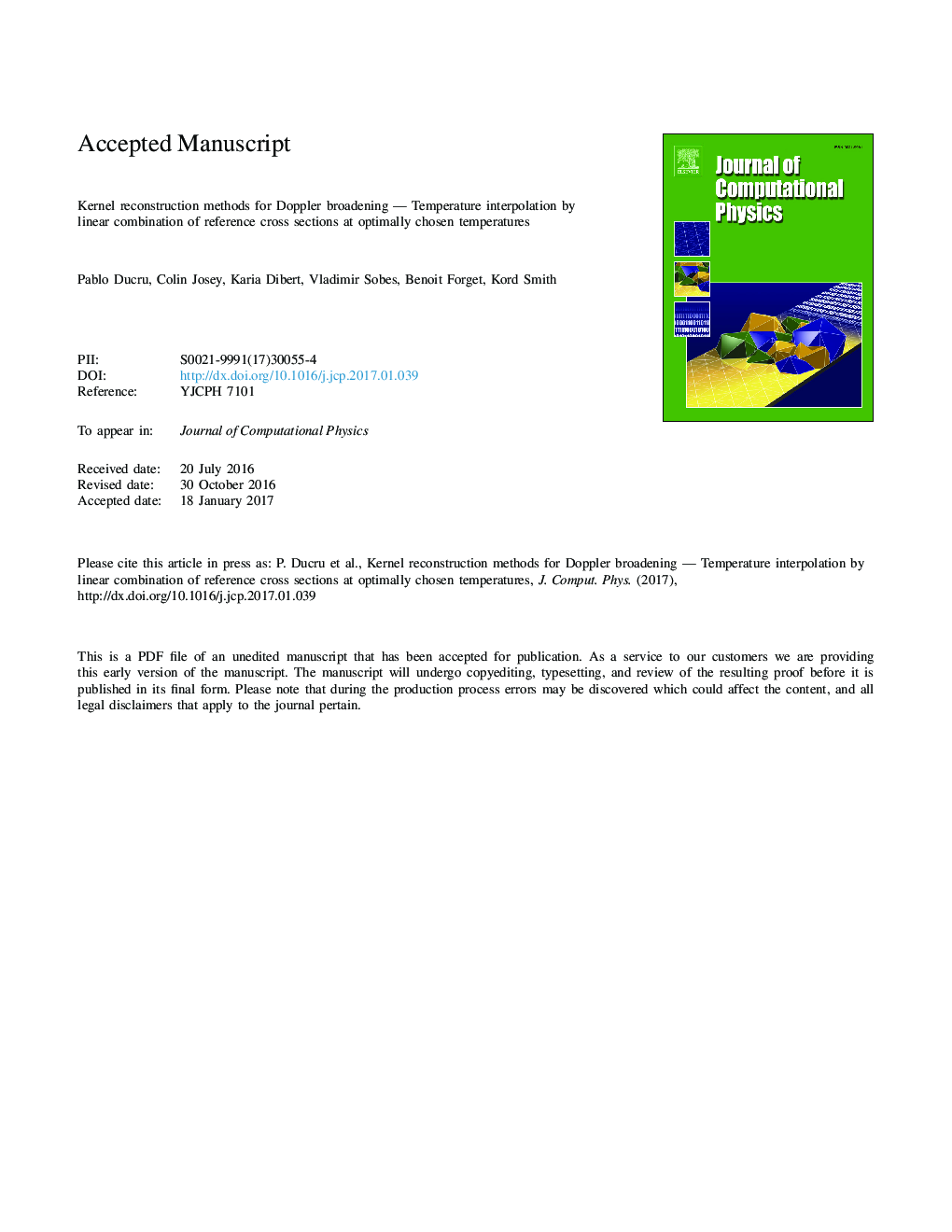| Article ID | Journal | Published Year | Pages | File Type |
|---|---|---|---|---|
| 4967537 | Journal of Computational Physics | 2017 | 29 Pages |
Abstract
This article establishes a new family of methods to perform temperature interpolation of nuclear interactions cross sections, reaction rates, or cross sections times the energy. One of these quantities at temperature T is approximated as a linear combination of quantities at reference temperatures (Tj). The problem is formalized in a cross section independent fashion by considering the kernels of the different operators that convert cross section related quantities from a temperature T0 to a higher temperature T - namely the Doppler broadening operation. Doppler broadening interpolation of nuclear cross sections is thus here performed by reconstructing the kernel of the operation at a given temperature T by means of linear combination of kernels at reference temperatures (Tj). The choice of the L2 metric yields optimal linear interpolation coefficients in the form of the solutions of a linear algebraic system inversion. The optimization of the choice of reference temperatures (Tj) is then undertaken so as to best reconstruct, in the Lâ sense, the kernels over a given temperature range [Tmin,Tmax]. The performance of these kernel reconstruction methods is then assessed in light of previous temperature interpolation methods by testing them upon isotope 238U. Temperature-optimized free Doppler kernel reconstruction significantly outperforms all previous interpolation-based methods, achieving 0.1% relative error on temperature interpolation of 238U total cross section over the temperature range [300K,3000K] with only 9 reference temperatures.
Related Topics
Physical Sciences and Engineering
Computer Science
Computer Science Applications
Authors
Pablo Ducru, Colin Josey, Karia Dibert, Vladimir Sobes, Benoit Forget, Kord Smith,
